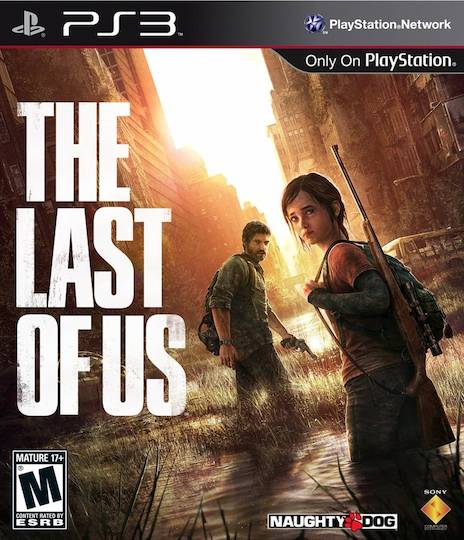
Arkane Studios are one of my favourite developers. Playing through Deathloop has made me realize that I’ve been playing their games the wrong way for years.
I’ll get into the nitty-gritty of this revelation, but first I want to frame it within a general game design principle. It’s not enough for designers to provide players with a myriad of interesting gameplay options (as Arkane games certainly do). Within those options, players may find a strategy that’s boring but reliable and effective. The existence of such a degenerate strategy may lead some players to repeatedly use it even if they ruin the game for themselves.
It is therefore essential that designers make boring tactics impossible or ineffective.
This is not the same problem as designing systems that encourage players to switch up their tactics. For instance, the classic RPG pattern of having some enemies that are weak to fire and others weak to ice. This is a “carrot” that encourages players to vary using fire and ice attacks. The problem archetype I’m referring to would be the player who dumped 100 points in their ice attack, and spends the rest of the game freezing enemies for massive damage regardless of elemental weaknesses. The game systems need a “stick” that disincentivizes this boring strategy.
I – CLEAN HANDS
I have a history of playing stealth games as puzzles that can be optimized. To quote myself from almost a decade ago:
My preferred approach is to play each scenario as flawlessly as I can. I like to ascertain a situation, determine a strategy, execute it, then figure out how I could have done better. Can I avoid alerting the guards? Use fewer resources? Turn the environment to my advantage? I treat it like a puzzle, playing it over and over to find the optimal path.
This is the attitude with which I took on the Dishonored series1. I tried over and over until I had a near-perfect stealth run. Nothing in the game’s systems discouraged me from playing this way; in fact, there were multiple systems that encouraged it:
- Killing and going loud gives you the high chaos “bad ending”. Chaos performance stats are shown at the end of every mission.
- There are compelling and creative nonlethal assassination options, and they often become unavailable if you alert the target or make some other error.
- Being judicious about stealth and killing aligns with Corvo and Emily’s story goal of stabilizing and regaining control of the Empire.
- Perhaps most importantly, there is no limit or penalty for save scumming.

Unlocking the “Clean Hands” trophy was challenging and rewarding in its own way. However, I ended up completing the game without ever engaging with the dozens of combat systems and tools the game had to offer. If this means I played Dishonored “wrong”, then I would argue that it wasn’t entirely my fault. The systems encouraged me to play flawlessly (carrot) and nothing prevented me from doing save scumming (stick).
Compare that with Deathloop, a game with similar action gameplay options but completely different high level incentives:
- You play the levels over and over. Early runs are typically messy and chaotic, but as you gain information (both in-game and as a player) the puzzle-box options slowly reveal themselves.
- Messed up your intricate plan? You haven’t permanently tarnished your save, just try again tomorrow.
- The presence of Julianna adds chaos, complicating any attempt at a “perfect” run.
- Killing eternalists doesn’t conflict with Colt’s morals or story goal. They’ll come back tomorrow anyway.
- You can only save between levels, and lose most of your day’s progress on death. However, to offset this, the game is quite forgiving in other ways (the Reprise slab, regenerating health sections, infinite power regen, etc.)
By actively disallowing my boring perfectionist strategy, Deathloop gave me permission to have fun. Rather than reloading when my plans went awry, I improvised. I engaged with all the combat and weapon systems I’d been neglecting all these years, and had a blast doing so. I got out of my own way and just enjoyed myself, knowing that the game systems allowed me to do so.
This shift in mentality could not have been accomplished with incentives alone. Even with the forgiving nature of the time loop, save scumming still would have been a temptation. Rather, the enforced permadeath and limited saves completely removed my ability to adopt a boring tactic.
II – WHY DO WE RUIN OUR OWN FUN
As designers, why is it necessary to solve the problem of players ruining their own fun? Shouldn’t players naturally avoid making themselves bored, and actively seek playstyles that are engaging? Why isn’t this a self-correcting problem?
The answer may lie in the concept of “double consciousness”, which in a general sense refers to the fact that “games are multilayered in terms of identity experience”. While studying D&D players in the 1970’s, sociologist Gary Allen Fine split the player’s identity into three. These ideas were later further developed by Harvey Smith (co-creative director of Dishonored) and Matthias Worch. The three parts are:
- Character: “the fictional character embodied by the player”
- Player: “the player acting within the framework and the rules of the game”
- Person: the person with life demands and self-perception outside of the game
Uniting these three frames is one of the challenges of game design. When they are not aligned on shared goals, they risk drifting apart and undermining the player’s investment in the game (i.e. ludonarrative dissonance).

Slide from Matthias Worch’s 2011 GDC talk “The Identity Bubble”
Playing Dishonored as a pacifist is compelling because it’s reinforced in all three parts of the player’s identity:
- Character: Corvo and Emily want to bring peace and stability to the Empire
- Player: Low chaos mission rating perceived as good performance
- Person: Identifying as a good person, therefore seeking the good ending
If there’s a countervailing incentive towards a more expansive and improvised playstyle, where is it seated within this identity framework? Trophies for creative kills provide an incentive within the game rules (i.e. “player”). If it’s a desire driven by emotions such as curiosity or boredom, this is also an aspect of the “player” identity (since we bring our emotions into the “magic circle” of a game). Within the “person” frame, it could be driven by self-perception as “someone who expresses their innovation and creativity within games”; Mark Rosewater calls this player archetype a “Johnny”.
Depending on one’s personality then, some players could have a completely different identity experience:
- Character: Corvo and Emily are badass supernatural assassins
- Player: I’m going to pull off cool assassin moves using all the tools in the toolbox.
- Person: “I would do cool stuff like this if I was Corvo”
The fact that both interpretations and playstyles are valid and supported within Dishonored is a testament to the range and versatility of the immersive sim genre. But it also suggests why the “boring tactics” problem isn’t self-correcting; players align a game’s narrative and mechanics with their own perspective, preferences, and values. Players aren’t really choosing their playstyle, it’s a manifestation of who they are.
It therefore behooves designers to thoughtfully craft their game story and rules to incentivize the ideal / desired / most fun way of playing. Assuming the developers at Arkane Lyon wanted to promote an improvisational playstyle, they skillfully reinforced it within the player’s identity frames:
- Character: Colt is brash, audacious, and willing to do anything to escape the loop.
- Player: The game’s structure rewards improvisation, not perfect play. No long term disadvantage to killing or going loud. Mistakes are impermanent, try again another day.
- Person: “If I was in Colt’s situation, I would do the same thing.”
III – NAUGHTY DOG COMBAT DESIGN
In my work as a systems designer at Naughty Dog, I’ve grappled with the same problem archetype in more low-level mechanics. We run frequent internal playtests when our games are in development; whenever I see a tester adopting a boring tactic to progress, I start thinking about how we could tweak our systems to push them to play more dynamically.
1. Staying put
For instance, consider the problem of the player choosing to stay put. They pick an attractive cover position and try to clear out the entire fight from that one spot. Playing this way is a very safe option, as enemies typically need to expose themselves to advance or flank. It’s also appealing to timid players who would rather stick to the section of the layout they know rather than move forward into the unknown.
However, this is a boring strategy. Playing this way won’t deliver on the fantasy of being a climbing / swinging / jumping treasure hunter (Uncharted) or a scrappy smuggler surviving on the ragged edge on their wits and grit (The Last of Us). It fails to engage with the complexity of the combat spaces or the knowledge model of the AI. If we condone players using this tactic, then it’s our fault if players come away from the experience with the impression that our games have lackluster combat.

We have several systems that are designed to make this tactic ineffective. The most direct method is grenades in the Uncharted series (and to a lesser degree molotovs in The Last of Us). The grenade manager detects when the player has remained within small radius x for more than y seconds, which is a heuristic for the player staying in place. When this condition is detected, it requests the AI coordinator to throw a grenade, flushing the player out of their position and forcing them to move.
A subtler system is baked into our enemy accuracy model. Like many things in video game AI, baseline enemy accuracy is calculated by multiplying together a set of tuning parameters, each expressed as a float in the [0,1] range. Some of these parameters are based on curves that ramp up over time. One of these parameters slowly ramps to 1.0 while the enemies know the player’s current position. Players who stay in place are penalized with enemies who gradually hone in their accuracy on a stationary target.
We also use enemy design to nullify this tactic. Brutes in Uncharted and Clickers in The Last of Us are tanky high-threat enemies that charge right at the player’s position. They function as “spiky balls”2 that force the player to maintain their distance and continuously reposition. Other enemies provide area denial, creating dynamic obstacles that limit where the player can fight from.

2. Charging at enemies
However, one of the unintended consequences of disallowing staying put is that players might pivot to charging directly at enemies instead. This is also an undesirable tactic, and for the same reasons; it short circuits other systems and flattens out the combat experience. This tactic is a particular concern for The Last of Us, where charging straight into gunfire unscathed would severely compromise the game’s grounded tone.
To disallow this tactic, we go as far as overriding the baseline enemy accuracy. Every frame we detect the player’s movement vector towards each enemy. If that vector is within a ~70° cone directly at an enemy within ~15 meters, we consider the player “charging towards” that enemy. Enemies who are being charged towards have their accuracy parameters overridden to be nearly 100% accurate. We also guarantee that they get a “full body” hit reaction, which knocks the player backwards on hit. Furthermore, in some cases, we even give them a more aggressive firing pattern when charged. It’s effectively impossible to close the distance on an enemy except this way.

This tuning is heavy handed, but it’s critical for the integrity of our combat loop that this tactic is ineffective. It forces players to consider the combat layout, using occluders to regain stealth or to approach enemies without being shot.
3. Hoarding resources
Another boring tactic we actively try to subvert is hoarding resources. Ammo and supplies are scarce in the world of The Last of Us, and some players respond to this by adopting an ultraconservative playstyle. They squirrel away all their shotgun ammo and crafted items, hesitant to consume them lest their need be greater in a future encounter. However, as in the other cases, people who play this way rob themselves of the full breadth of the gameplay experience.
The most straightforward solution to this issue is to have a low maximum inventory. This means that hoarding players quickly find themselves in a situation where they’re walking past pickups unable to pick them up. There’s no benefit to hoarding once you’ve hit the cap, so players have permission to use their items less discriminately. Since weapons have individual ammo types, this has the added benefit of pushing players to cycle through every capped weapon in their inventory.
A more pernicious solution to this problem is to dynamically spawn fewer items based on current inventory. While this does penalize hoarding, the increased scarcity simply reinforces the player’s mental model; stingy item drops validate a conservative playstyle. We have some systems like this in The Last of Us series, but we keep it a light touch to avoid this issue.
Counterintuitively, on The Last of Us Part II we found it more effective to use starvation prevention logic to preempt players from developing this mindset entirely. This means loading the dice, favouring high-roll drops for players with low resources. However, we wanted to avoid rewarding players who were simply playing carelessly by resupplying them mid-fight. To that end, we ensured that the starvation logic only triggered in the exploration spaces between fights. This helped maintain the player’s long term supplies, and bolster their confidence that the game wouldn’t leave them stranded.
Another effective prevention measure is to limit the opportunities to spend their resources. In playtests, we often noticed players hoarding supplements (player upgrades) while reliably spending their parts (weapon upgrades). This is because player upgrades are available anytime from the backpack menu, whereas parts can only be spent at a workbench. Since there’s usually at least an hour of play time between workbenches, the same loss aversion that causes hoarding works in our favour. Might as well spend your parts now, as you may not have another chance for a while. (Deathloop also limits upgrade opportunities this way; you can only spend residuum between missions.)
IV – ADDITIONAL CASE STUDIES
Here are some additional examples of designers responding to boring tactics.
League of Legends – Lane Swapping (2v1)
Around 2015, a new strategy emerged in high level League of Legends play. Rather than following the traditional metagame of sending two players to the bottom lane, teams would send their duo to the top lane to face a lone opponent. Depending on the champion draft there can be various incentives to do this: dodging an unfavoured matchup, starving the enemy solo laner, and the gold and map advantage of taking an early tower.
On the surface this seems like a valid and interesting strategy, an alternative choice that players can situationally opt into. However, it has a number of deleterious consequences for League of Legends as a whole. Firstly, it drastically shrinks the number of viable top lane picks, placing an enormous premium on the small pool of champions that can cling to life in a 1v2 lane. Secondly, short circuiting the typical “lane phase” in this manner takes a lot of excitement out of the early game. Both teams are forced to play conservatively as they strategically concede their weak side of the map, and the action doesn’t pick up again until midgame. This staid opening is particularly problematic for League as a spectator esport.
Riot have pursued a number of approaches to limit the effectiveness of this tactic, with two in particular having stood the test of time. Firstly, they have made turrets more resilient in the early game, first as an emergency patch before the world championship and later more officially as a “turret plating” mechanic. Secondly, despite a stated desire to “find a more nuanced approach” that preserves map symmetry, they have made the bottom turrets a little weaker. Only the top and mid lane towers get a “fortification” buff for the first five minutes of the game.
Destiny – The Loot Cave
Less than a week after Destiny’s initial launch, a curious strategy emerged. Players found an effective strategy for farming engrams by massing together in communal spaces and mass firing into a narrow cave, instantly obliterating the continuously respawning enemies.
I wrote a lengthy post back in 2014 about how the runtime interaction of various mechanics created the Loot Cave dynamic. Needless to say, the developers at Bungie felt like this was a boring strategy in comparison to the intended pathway to progression: “shooting at a black hole for hours on end isn’t our dream for how Destiny is played.” They hotfixed this particular area and made their activities more rewarding.
Metal Gear Solid V – Enemy Preparedness
Once players find a playstyle that works, it can be very difficult to push them to try other approaches. Metal Gear Solid V: The Phantom Pain has a unique “enemy preparedness” system designed to do just that: dynamically reacting to the player’s tactics and deploying enemies with countermeasures.
Players have documented six categories of preparedness, though they are not specifically identified in-game. For instance, if players frequently approach bases under the cover of darkness, they’ll start deploying mortar-flares and night-vision goggles. If players assault bases aggressively, they’ll begin wearing body armour and carrying LMGs.
I think of this as a second-order design solution. It’s not that any of these individual playstyles is inherently boring. Rather, in a game with a wide array of available options, it’s boring to keep playing the same way. The preparedness system incentivizes pivoting to new strategies.
Call of Duty – Infinite Respawns
While the use of this technique has waned in modern titles, a mainstay of the classic Call of Duty games was that enemies infinitely respawned until you pushed forward and triggered the next phase of the fight.
While this type of encounter design can be frustrating, it’s designed to prevent playing passively. Without infinite respawns it would be very effective to hang back in cover, snipe the enemies from afar, then saunter forward when the coast is clear. However, this would fail to deliver on the fantasy of being on the frontlines of a war.
Modern shooter games tend to use different approaches to solve this same problem. For instance, creating combat layouts with shorter sightlines and more legible flank routes. Within the AI, developers can adjust how enemies peek and aim from cover to make them less susceptible to being whittled down at long range.
V – ACCESSIBILITY IS NOT BORING
How does accessibility fit within the designer’s responsibility to disallow boring tactics? The common argument is that overcoming difficulty is core to the experience of certain games, and that options that reduce difficulty would enable players to ruin the game for themselves. In this view, using options to remove challenge is a boring player choice, and thus is fair game for a designer to disallow.
As an accessibility advocate I do not agree with this position, but I don’t believe the core concern is completely without merit. Rather, I believe that it is also the designer’s responsibility to frame these options. Players need context and clarity to determine whether their experience would benefit from enabling certain options.

For instance, consider this message that Celeste presents as part of its menu flow3:
“Assist Mode allows you to modify the game’s rules to fit your specific needs. This includes options such as slowing the game speed, granting yourself invincibility or infinite stamina, and skipping chapters entirely. Celeste is intended to be a challenging and rewarding experience. If the default game proves inaccessible to you, we hope that you can still find that experience with Assist Mode.”
Based on focus test feedback, we added a similar information screen to our “combat accessibility” submenu in The Last of Us Part II. It says:
“These settings are designed to make combat accessible for all players. As such, they can significantly alter the gameplay experience.”
In both cases, the developers are framing the intended audience for accessibility features as players with “specific needs”. These are players for whom the “default game proves inaccessible”, rather than the intended “challenging and rewarding experience.” The designers do not condone tweaking these options haphazardly; they are intentionally designed to support a player base with a spectrum of diverse needs.
Those who choose to enable these options are doing so with the clear understanding that they are changing the rules of the game. The “magic circle” of the game is bounded by these rules, so modifying them must be done from the “real world” outside the circle. The designer has relinquished a small measure of control, and put the burden of tailoring (literally “to make fit”) the game experience on the player. With their cooperation, we remove the barriers and rejoin the intended experience within the magic circle.
VI – CONCLUSION
In the MDA framework, game designers define the rules of the game (mechanics). In motion, the rules interact with each other and with player input (dynamics), creating an emotional and intellectual experience in the player’s mind (aesthetics).
At its core, what I am arguing here is that designers are also responsible for the negative space of aesthetics. There should be intention and craft put towards the experience that the player is NOT having. This is a kind of shadow game design, where the goal is to surgically cut holes out of the possibility space where boring options used to be.

1. To prove I’m not alone in playing this way, check out this poster who has a similar revelation about perfect runs while playing Prey: Mooncrash. ↩
2. No clue where I picked up this name, it’s apparently not a term of art. ↩
3. I am quoting the modified version of this message, which was adjusted in a 2019 patch. ↩







January 5th, 2022 at 11:05 pm
This is a fantastic write up. Thanks for sharing all these gold nuggets. Now I have to go replay Uncharted…